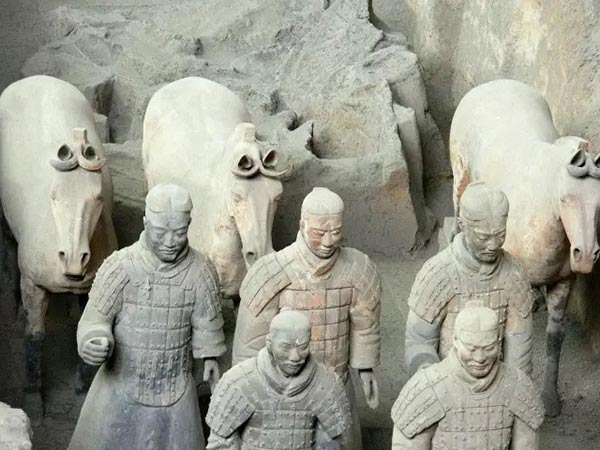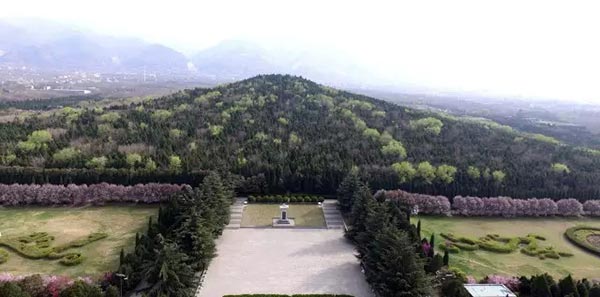“Different animal species were unearthed in Emperor Qinshihuang’s mausoleum, including real animals and those made of pottery or iron.” – Wu Lina, Researcher with Emperor Qinshihuang’s Mausoleum Site Museum.

PHOTO: news.xinhuanet.com
Most people are familiar with the incredible mausoleum of Emperor Quinshihuang in China’s Shaanxi province, more commonly known as the Necropolis of the Terracotta Army. Since its discovery in 1974, when a group of peasants found it digging for a water well, archaeologists have continued to excavate and catalog the vast necropolis, and they’re still finding new surprises.
This new find was the product of a recent excavation, the result of several years of hard work, announced by the head engineer of Emperor Qin’s Mausoleum Site Museum and the archaeological team. They’ve discovered more than 400 new burial pits, and dozens of small tombs scattered near the sites, and have finally managed to map the entire necropolis.
The pits were home to stone helmets and armor. The researchers working on the site believe that these were not used in battle, but are still unsure of what their function might be, if not purely ceremonial.
Beyond the new stone artifacts, the archaeologists have unearthed something even more special: a vast wealth of animal-related relics. With this new find, Emperor Qin’s tomb is now the tomb containing the most animal species discovered so far. They’ve discovered not only beautifully crafted figures of horse, rare birds, deer, and sheep, but also real animal bones buried in several pits.

PHOTO: news.xinhuanet.com
The most common species by far is horse. Entire stables were cut into the rock of the tombs and filled with horses, and that shows with the vast amount of horse bones uncovered at the site. Other animals the researchers have found include the remains of rare birds, including water fowl.
The stones figurines include depictions of deer alongside the horses, and copper figurines were modeled off of cranes, swans, and geese. Archaeologists also found the remains of sheep, chicken, fish, and turtles. Perhaps Emperor Qin was trying to create not only a city of the dead, but a whole world for himself in his vast necropolis to dwell in the afterlife.
The Qin dynasty was the first unified state in Chinese history. It spanned from 221 to 207 BC, contemporary with the Empire of Rome, and the Punic Wars between Carthage and Rome. Emperor Qin, the famous Emperor who created the necropolis that houses the Terracotta Army, spent his reign reforming Chinese politics, economy, military affairs, and culture. He standardized weights and measures and created an universal chinese currency, and even standardized the Chinese written character. He began his work on his mausoleum when he took the throne at the age of thirteen. It took eleven years to build.

